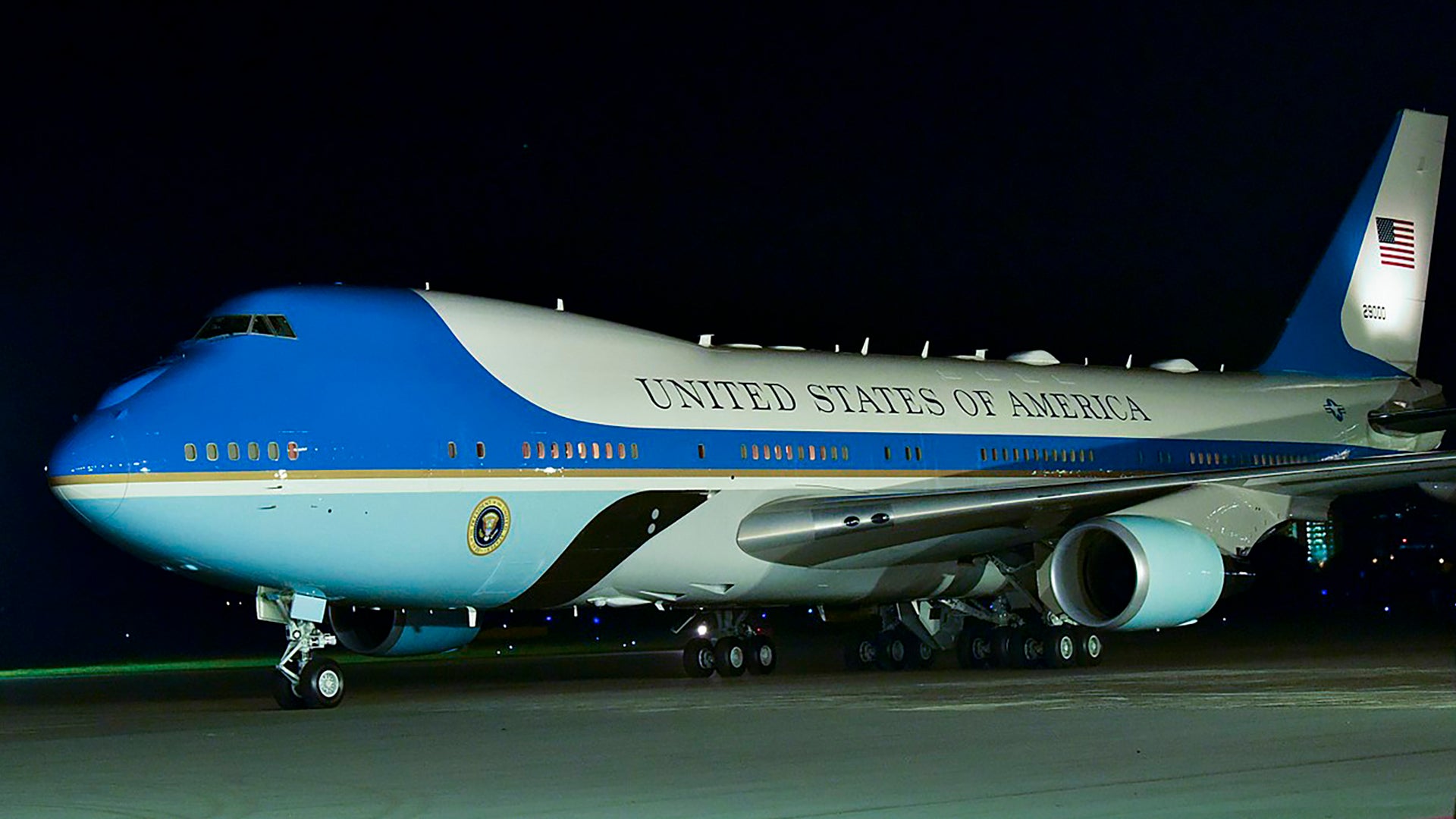We are learning more about President Trump’s short trip to Al Asad Air Base in Western Iraq now that Air Force One is safely at Ramstein Air Base in Germany. This includes an account of the flight from Trump himself.
While fielding questions at the U.S. military forward operating location, Trump was asked if he had concerns about the trip. Here is how he replied:
“Absolutely. When I heard what ya had to go through. I mean look, I had concerns for the institution of the presidency, because, not for myself personally, I had concerns for the first lady, I will tell you. But if you would have seen what we had to go through, with the darkened plane with all windows closed, with no lights on whatsoever, anywhere, pitch black, I’ve never seen that, been on many airplanes, all types and shapes and sizes, I’ve never seen anything like it.
We’re coming in and I know all of the things that were surrounding us for safety. So did I have a concern? Yeah I had a concern. But my bigger concern was maybe the people that were with me. Certainly all of them. Except maybe John Bolton. He’s a pretty tough guy, he can handle it. Right John? John Can handle it.”
See the exchange here:
What Trump is referring to is the tactical approach and measures used by Air Force One’s crew to access Al Asad Air Base safely. This would have involved flying the approach totally lights out, likely using a corkscrewing or steep tactical approach method. Many of the lights at the base may have also been turned off during Air Force One’s recovery and helicopters would have been in the air patrolling the sprawling base’s borders and commandos would have been ready to execute combat search and rescue operations if something bad were to have happened to the iconic aircraft and its occupants. Surveillance aircraft would have been airborne sucking up any communications intelligence from nefarious actors that may have been tipped off to Air Force One’s arrival or presence at the base. Fighter aircraft would have also provided escort and combat air patrol duties over the area. This could have included flying alongside Air Force One during its approach to act as heat traps.

Since the Global War on Terror kicked off following 9/11, Air Force One’s crews—the best the USAF has to offer—have gotten real world experience in executing these types of operations, most famously with George W. Bush flying to Baghdad in 2003. Many others trips to Afghanistan and Iraq followed over the years and across both the Bush and Obama Presidencies.
This is an excellent documentary. Start at 31:00 for a good idea of exactly what an operation like this looks like:

Some may question why Air Force One, hardly an inconspicuous aircraft, was used for this sensitive mission. The VC-25A is the most heavily self-defended transport aircraft in the world by a large margin. It has been upgraded with many AN/AAQ-24 Directed Infrared Countermeasure (laser) turrets and also packs the AN/AAQ-204 Matador infrared countermeasure system that was installed when the aircraft were first delivered decades ago. So for the primary threat, shoulder-fired heat seeking missiles, also known as Man-Portable Air Defense Systems (MANPADS), no aircraft on earth is better suited at countering it.

Air Force One is also substantially faster than a C-17—another good attribute to have when flying into sensitive airspace. Still, a C-17 could be a low-profile alternative option when packing a ‘Silver Bullet’ VVIP system which you can read all about here. A C-32A, commonly referred to as Air Force Two, is outfitted with similar defensive systems as a VC-25A, albeit on a smaller scale, but using it would inject more risk when flying into an airfield where MANPADS are a major threat due to it being a twin-engine design.
Beyond those traits, the VC-25A packs the necessary communications needed to keep the President in secure contact with the National Command Authority if need be and pretty much anyone else on the planet, It also possesses substantial comfort, includes its own surgical room, and a host of other unique capabilities that allow its crew to make major changes to their route and general flight plan on the fly. This includes a special fourth crew position for advanced navigation and real-time flight planning. The aircraft is also aerial refueling capable, adding to its flexibility during contingency operations.
So basically, it may be big and very recognizable, but the VC-25A is by far the best aircraft for the job. And once all the lights go out, its high-profile visual appearance becomes far less of a handicap.

Also of note in new video coming out from the visit, is a group of Navy SEALs that took photos with the President while decked out in combat gear. SEALs have been highly active in Iraq since ISIS blitzed across the northern portion of the country years ago. The special operators did not have their faces covered or obscured in any of the official media imagery that has been released, which has led to concerns by some over the White House’s adherence to operational security protocols. It’s worth noting that special operators have been photographed in the field on many occasions in recent years.
Regardless, it had to have been a cool experiencing for the men and women in uniform to meet the President in a remote operating area like Al Asad Air Base. It is a bit odd that Air Force One is returning home after just three hours in Iraq and not heading to an established base like Al Udeid in Qatar and/or Bagram Airfield in Afghanistan where Trump could meet with more troops and receive briefings from commanders on the ground there.
We will keep you up to date as more info about Trump’s first trip to a conflict zone emerge.
Contact the author: Tyler@thedrive.com
